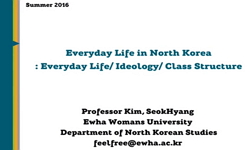From “welfare approach” to “gender-mainstreaming”, the theoretical discourse on women illustrates gender as a core element in international development. Urging the international political bodies to systematically incorporate gender perspective...
http://chineseinput.net/에서 pinyin(병음)방식으로 중국어를 변환할 수 있습니다.
변환된 중국어를 복사하여 사용하시면 됩니다.
- 中文 을 입력하시려면 zhongwen을 입력하시고 space를누르시면됩니다.
- 北京 을 입력하시려면 beijing을 입력하시고 space를 누르시면 됩니다.
Gender-mainstreaming in official development assistance(ODA) : a comparative study on Sweden, Japan and Korea
한글로보기https://www.riss.kr/link?id=T13845531
- 저자
-
발행사항
서울 : 경희대학교 평화복지대학원, 2015
-
학위논문사항
학위논문(석사) -- 경희대학교 평화복지대학원 , 국제평화전공 , 2015. 8
-
발행연도
2015
-
작성언어
영어
-
주제어
gender ; gender-mainstreaming ; oda ; international development ; korea ; japan ; sweden
-
DDC
322-A 판사항(22)
-
발행국(도시)
서울
-
형태사항
70 p. : 삽화 ; 26 cm
-
일반주기명
지도교수: 홍기준
경희대학교 논문은 저작권에 의해 보호받습니다.
참고문헌: p. 63-70 - 소장기관
-
0
상세조회 -
0
다운로드
부가정보
다국어 초록 (Multilingual Abstract)
From “welfare approach” to “gender-mainstreaming”, the theoretical discourse on women illustrates gender as a core element in international development. Urging the international political bodies to systematically incorporate gender perspectives in all policies and programs, this study particularly focuses on the concept of “gender-mainstreaming”, a new approach that gained highlight during the Fourth World Conference on Women in 1995. Specifically, the study seeks to measure the current status of Korean gender-mainstreaming in ODA by comparing and identifying lessons from the experienced two countries and also the peer OECD Development Assistance Committee (DAC) member states, Sweden and Japan. In order to compare the three countries’ gender-mainstreaming in ODA, the study had examined how social, economic and aid organizational structure influenced on allocation of aid in social-infrastructure & service for gender equality.
The study concludes that gender equality is a cross cutting issue closely related to fundamental human rights and democracy, and the analysis showed social and cultural background, gender budgeting and organizational structure can effect one’s country’s investment on gender-mainstreaming in ODA. While Korea showed high aid concentration particularly on “population and reproductive health”, and additionally did not thoroughly implement gender elements within the most highly invested sector, Sweden on the other hand turned out to have high and equal distribution within all social-infrastructure & service sectors including education, health, population & reproductive health, water, government & civil society and others. Lastly, Japan had similar patterns with that of Korea, but definitely had higher budget and relatively even aid allocation for gender equality projects in social-infrastructure & service. The study realizes the relatively short history in international development, society’s demand for traditional gender roles and the rapid economic growth of Korea exist as obstacles for the country’s contribution for gender-mainstreaming in ODA. However, the study suggest as to truly contribute to the achievement of democracy and human rights through gender-mainstreaming in ODA, the planning and implementation of gender projects should be in a long-term perspective reflecting the social, economic and organizational changes of the donor country.
목차 (Table of Contents)
- Chapter1. Introduction 1
- 1.1 Background of the Study 1
- 1.2 Objective of the Study 3
- 1.3 Scope and Method of the Study 4
- Chapter2. Theoretical Background of Gender-mainstreaming in ODA 6
- Chapter1. Introduction 1
- 1.1 Background of the Study 1
- 1.2 Objective of the Study 3
- 1.3 Scope and Method of the Study 4
- Chapter2. Theoretical Background of Gender-mainstreaming in ODA 6
- 2.1 Gender as Cross-Cutting issue in International Development 6
- 2.1.1 Why women-issue matters in development 6
- 2.1.2 Discourse on Women, Gender and Development 8
- 2.2 Literature Review on Gender-mainstreaming in ODA 11
- 2.2.1 Gender-mainstreaming and Development 11
- 2.2.2 Gender-mainstreaming in OECD DAC member states 13
- 2.3 Analytical Framework 14
- 2.3.1 Gender-Inequality Index 14
- 2.3.2 Gender Budgeting 15
- 2.3.3 Organizational Structure 16
- 2.3.4 Implementation of Programs and Projects 17
- Chapter3. A Comparison of Sweden, Japan and Korea 20
- 3.1 Sweden 20
- 3.1.1 Gender-Inequality Index 21
- 3.1.2 Gender Budgeting 23
- 3.1.3 Organizational Structure 26
- 3.1.4 Implementation of Programs and Projects 27
- 3.2 Japan 29
- 3.2.1 Gender-Inequality Index 30
- 3.2.2 Gender Budgeting 32
- 3.2.3 Organizational Structure 35
- 3.2.4 Implementation of Programs and Projects 36
- 3.3 Korea 38
- 3.3.1 Gender-Inequality Index 39
- 3.3.2 Gender Budgeting 41
- 3.3.3 Organizational Structure 45
- 3.3.4 Implementation of Programs and Projects 47
- Chapter 4. A Comparative Analysis and Its Implications 53
- Chapter 5. Conclusion 60












